1/8
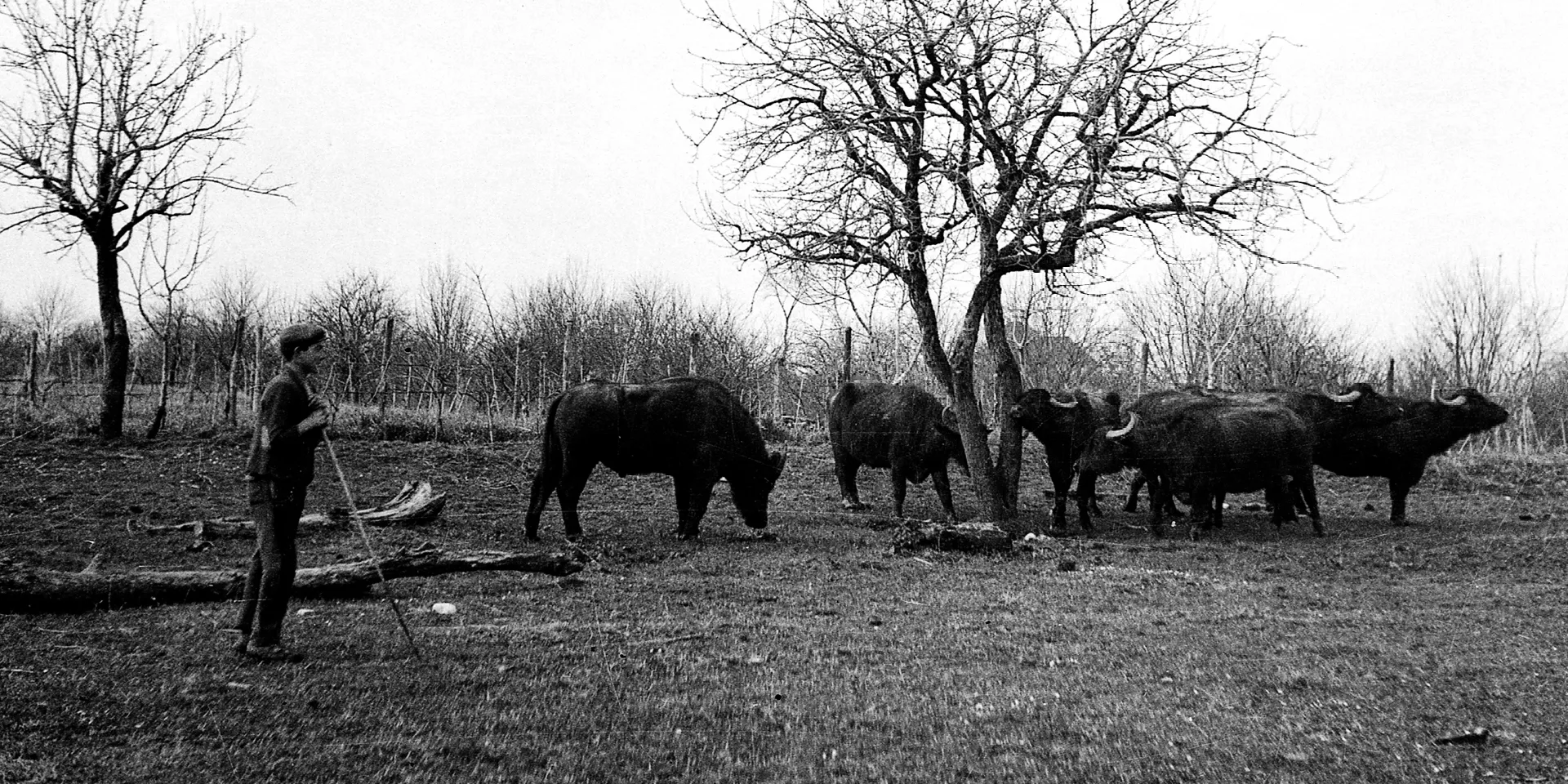
Our is an ancient history.
Almost a thousand years and it feels like yesterday. The history of the Mozzarella di Bufala Campana, in steps.

The origins of Mozzarella di Bufala Campana are directly linked to the introduction of buffalos into Italy..
One of the most credible hypotheses claims that the spread of the buffalo in Southern Italy took place during the Norman period. The buffalos came from Sicily, where they had arrived at the end of the 10th Century following the invasions by the Saracens and the Moors.
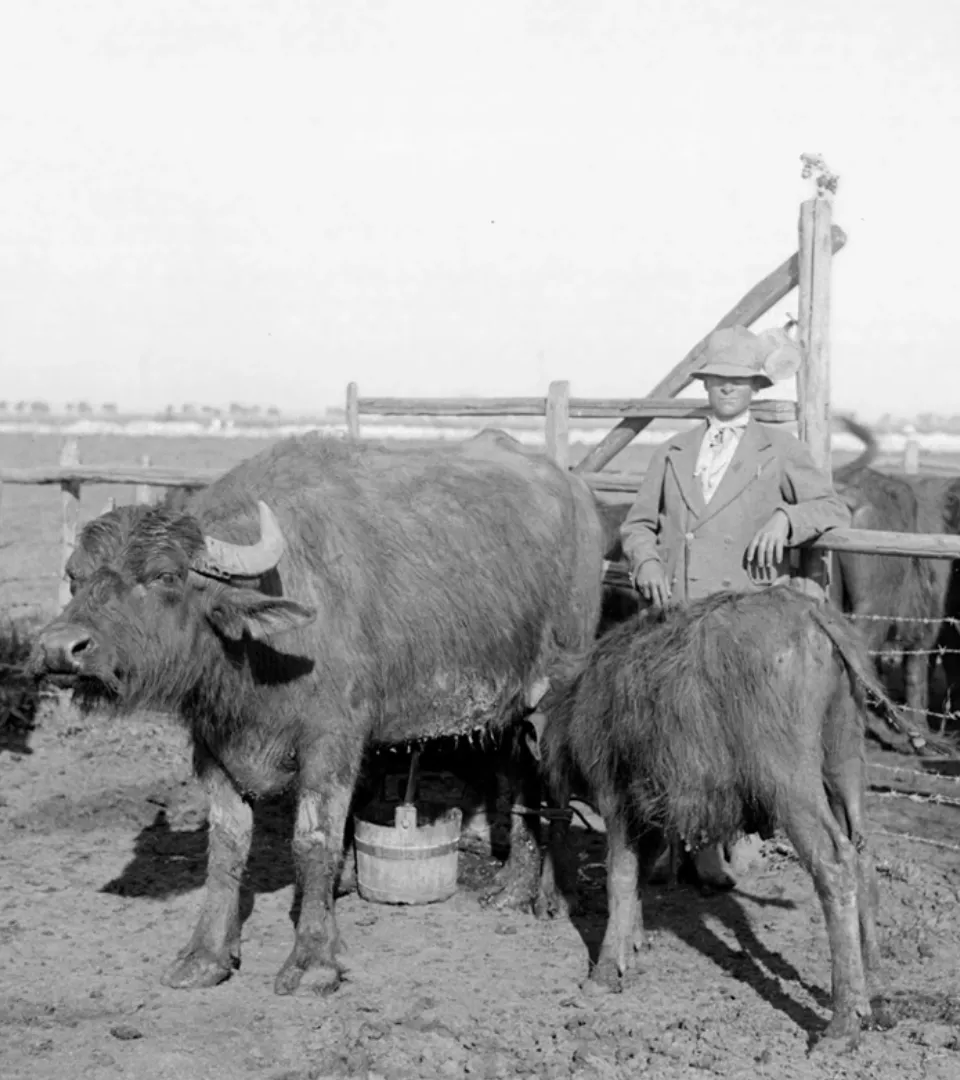
Around the 11TH Century, the swamping of the coastal plains of the lowlands on the Tyrrhenian side – Volturno and Sele Plains – took place, creating an environment greatly suited to raising buffalos.
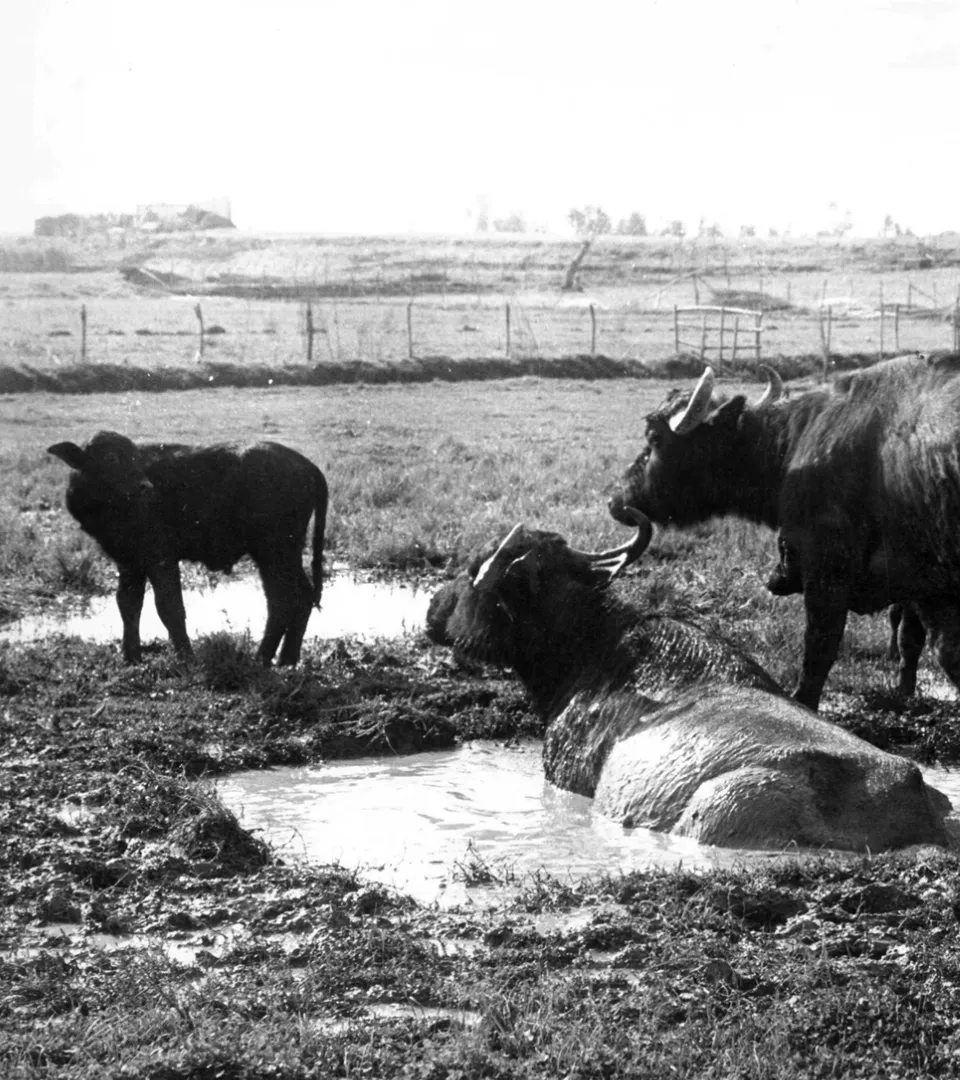
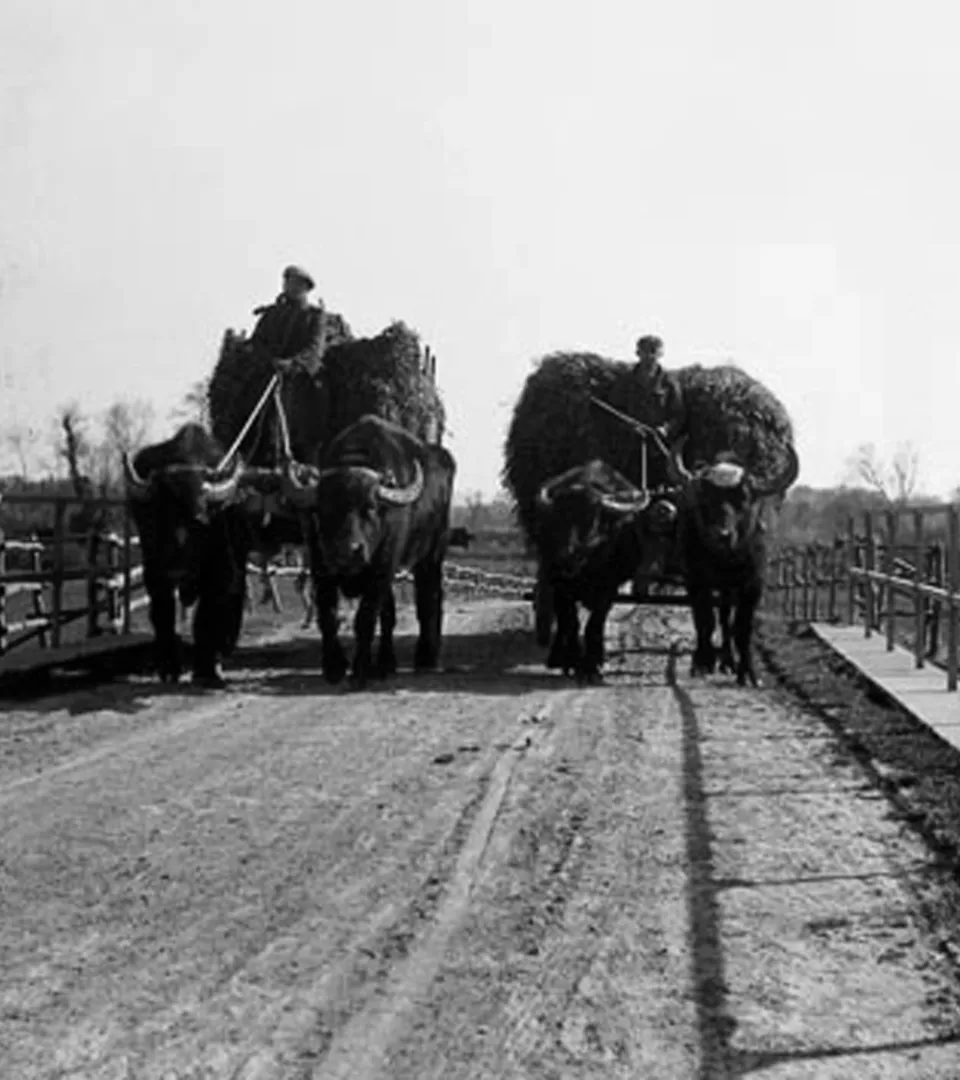
In the Swabian era the buffalos arrived in the areas currently used for their farming (1189-1266).
However, the first historic documents testifying to the production of Mozzarella di Bufala Campana go back to the 12th Century. According to a number of manuscripts, the monks from the monastery of San Lorenzo in Capua habitually offered a cheese called mozza or provatura (when smoked), accompanied by a slice of bread, to the pilgrims of t he Metropolitan Chapter who, every year, walked in procession up to the Convent’s church.
In the 14th Century, the commercialisation of buffalo cheese took off in the wealthy markets of the Naples and Salerno areas.
There are a number of testimonies that demonstrate that the production and sale of the first antecedents of Mozzarella di Bufala Campana “mozze” and, above all, “provature” underwent a smoking process which extended the commercial life of the product.
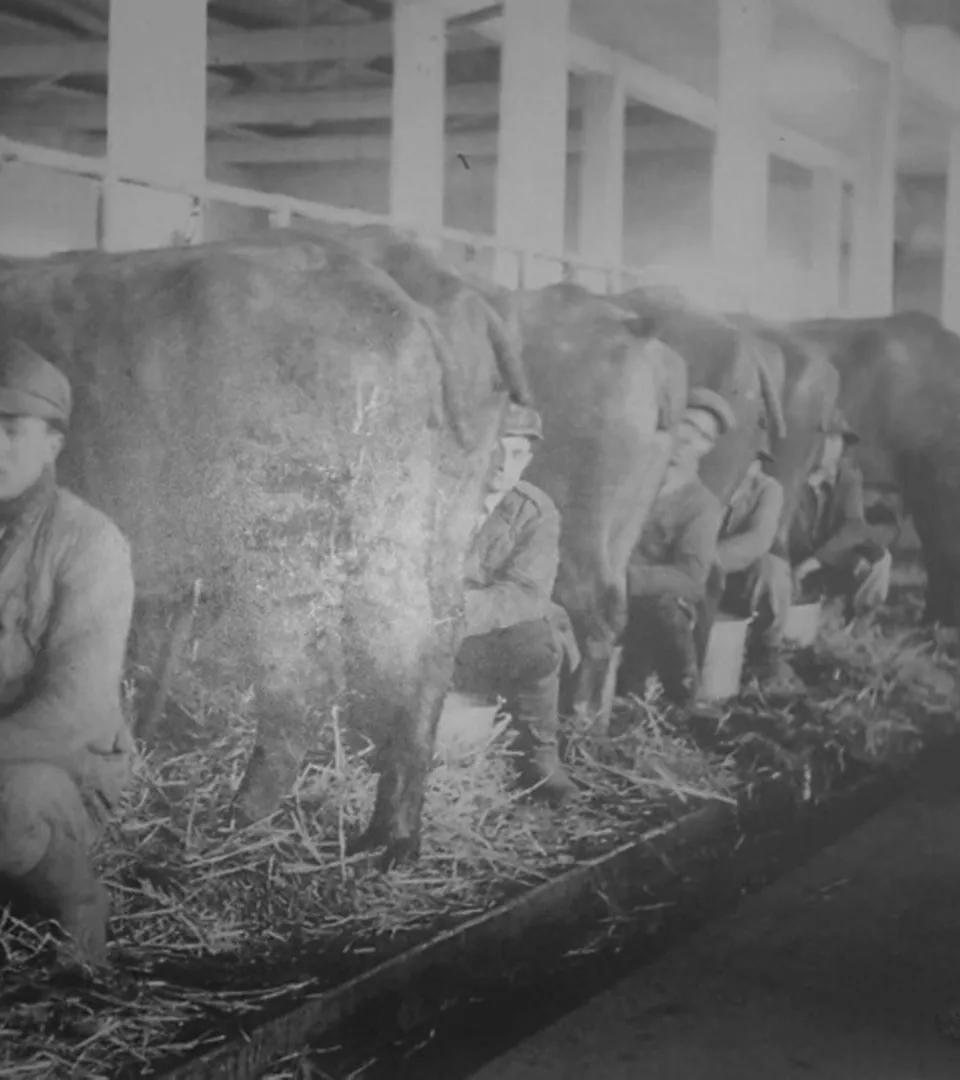
The 15th Century saw the birth of the first “bufalare” or buffalo barns. These were characteristic circular brick constructions equipped with a central fireplace.
Where, previously, the buffalo mozzarellas were produced where the animals were milked, with the advent of the bufalare, the production process was separated from that of transforming fresh buffalo milk. The animals were not allowed into these designated and more hygienic environments. All they contained was everything that served for the production of delicious provolas, caciocavallos, butter, ricotta and buffalo mozzarellas.
1570 saw the first written text in which the word “mozzarella” appeared. This was the great Renaissance work on cooking by Bartolomeo Scappi, cook to the Papal Court.
Mozzarella di Bufala Campana became a widely consumed product in the 1700s.
This process was accelerated by the Bourbon royal family who set up an important buffalo farm with an associated experimental cheese dairy for the transformation of fresh buffalo milk in the Reggia di Carditello in the province of Caserta. The dairy had stable records in which the events that were most important for the buffalos were written down. Each of them had its own name, that usually referenced one of the members of the court.
During the period of the Spanish domain, the buffalos were also used as game. For the “buffalo hunt” expeditions, the court would travel to the farming areas of the Volturno and Sele Plains.
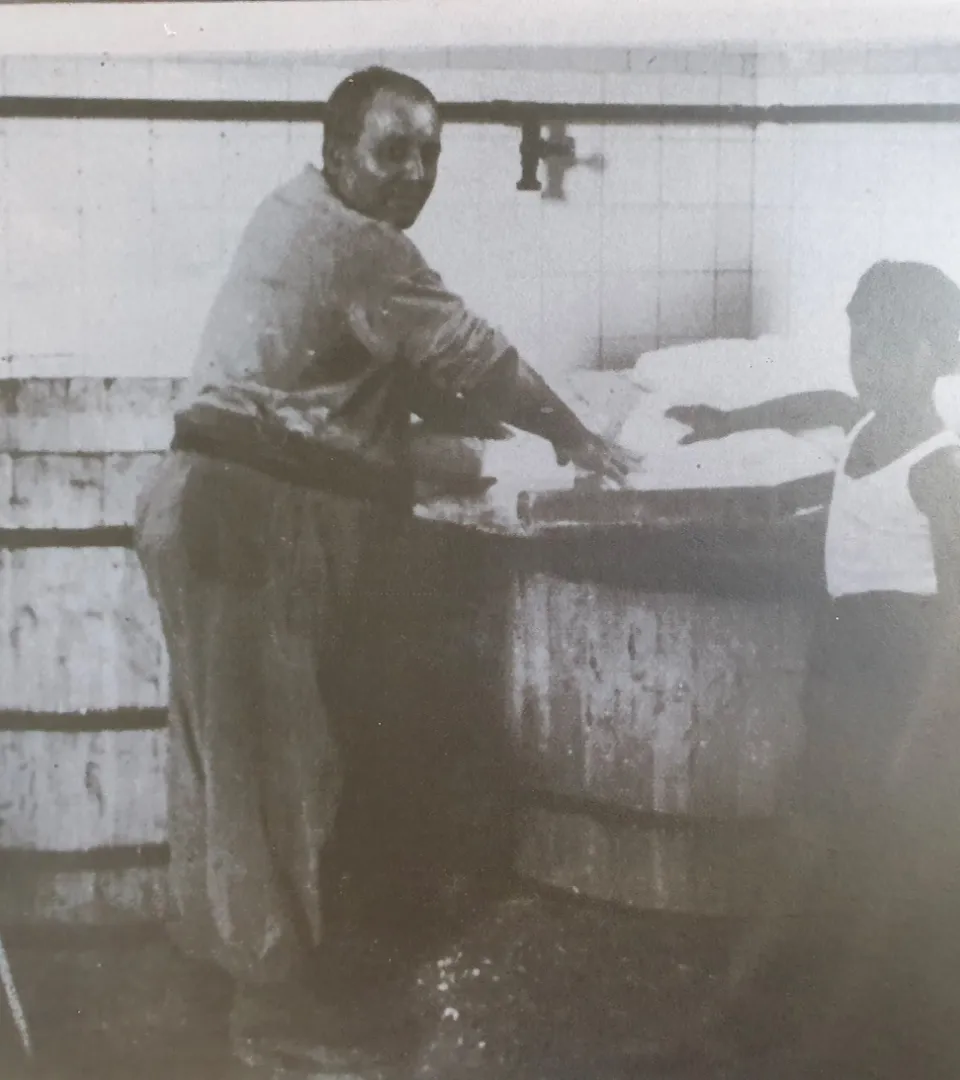
The unification of Italy marked another important step in the history of Mozzarella di Bufala Campana. The “Taverna” was set up in Aversa. This was an actual wholesale market for Mozzarella di Bufala Campana and the dairy derivates of fresh buffalo milk. Amongst these was Ricotta di Bufala Campana that, on a daily basis, established the quotations in relation to manufacture and demand.
Its commerce was by now regulated: the buffalos’ owner, who transformed the milk, was obliged to sign proper contracts with the “distributors” of the products, valid from 1st September through to 31st August of the following year.
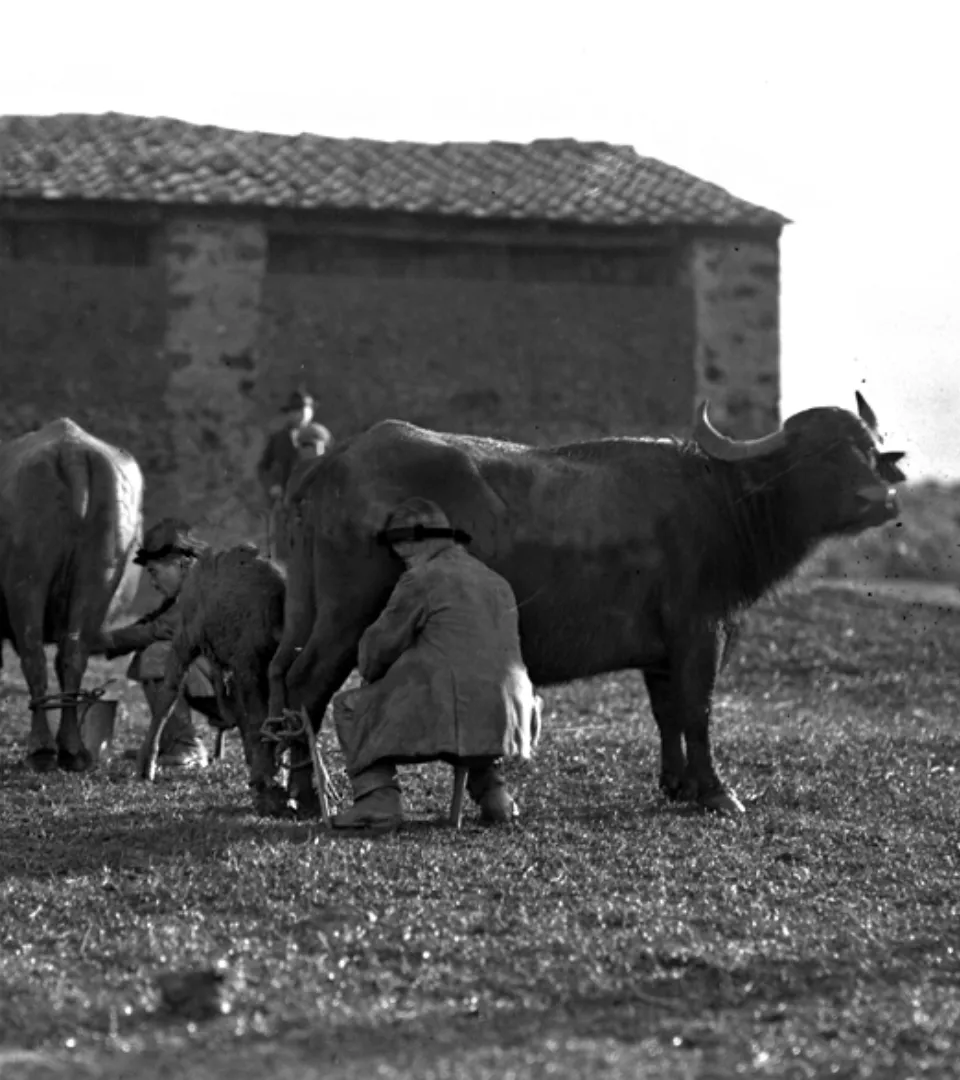

Rocco Scotellaro (1940)
The poet and author from Lucania, Rocco Scotellaro, in his investigation into peasant culture in Southern Italy, narrates that the buffalo drover knows his buffalos individually, as if they were “Christians”. He would give a name to each of them. “Countess”, “Lovey”, “Blank Cheque”, “Novice Nun”, “The Sickness”, “On the Hay”. At times, the names were transformed into aphorisms born out of the animals’ behaviours and their very close relationship with their drover.